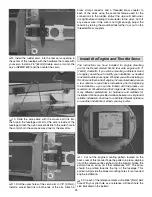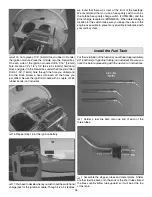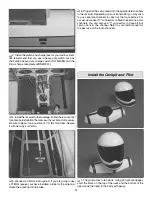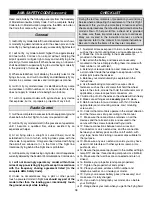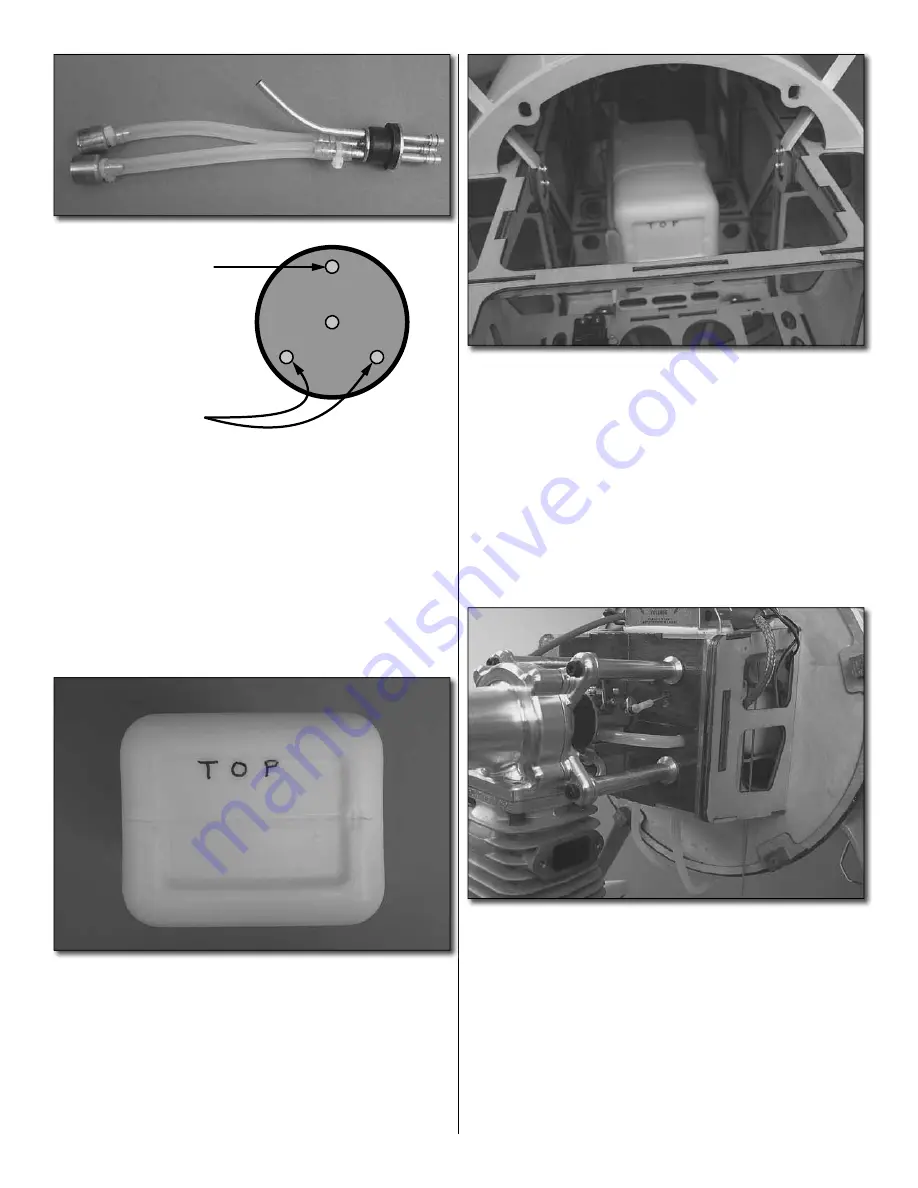
27
VENT/PRESSURE
(OR OVERFLOW)
One line is for
fueling/defueling
and the other is
for fuel pickup to
the carburetor (it
doesn’t matter which).
❏
3. Connect the fuel tubing to the short tubes and the
clunks–cut the lines so that the clunks cannot contact the
back of the tank–otherwise they could get stuck. Note that
one of the lines will be used for fueling and defueling and the
other line will be the pickup line that goes to the carburetor.
The bent tube will be the vent/overfl ow line that will be
connected to a line that exits the bottom of the fuselage.
I
mportant:
Secure both ends of both fuel tubes with small
nylon ties. This is an important measure that must be taken
to be sure the lines remain attached inside the tank.
❏
4. Write “TOP” on the back of the tank so you will know
which way to install it after inserting the stopper assembly.
Insert the stopper so the vent tube will be at the top of the
tank. Then tighten the screw to squish the stopper and seal
the tank. Shake the tank to make sure the clunks can move
around and the fuel lines are not too long.
❏
5. Install 13" [330mm] of fuel tubing onto each of the lines
coming from the fuel tank. Be sure to put a tie wrap on each
of them.
❏
6. Inside of the fuselage you will fi nd two slots on both
sides of the fuel tank tray. Install a long tie wrap through the
slots and then put the tank in position on the tray. (If you wish
to put foam under the tank do this now). Pull the tie wraps
around the tank, making sure that the tie wrap falls into the
recesses in the tank. Pull the tie wraps tight and then cut off
the excess tie wrap material.
❏
7. Determine the location for the fuel line to come through
the fi rewall and then drill a hole appropriate to the size of
your fuel line. Install the fuel line to the carburetor and route
the remaining fuel line out the bottom of the mounting box.










